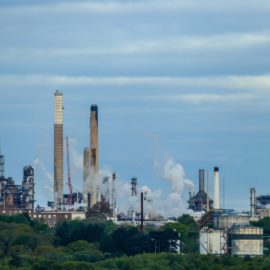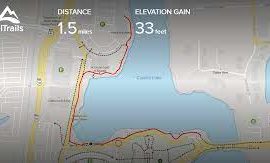
Capital Lakes is to join the Superfund list.
The Environmental Protection Agency on Wednesday formally proposed adding the contaminated Capitol Lakes in Baton Rouge to the agency’s Superfund National Priorities List, a move that will prioritize funding for its cleanup and possible enforcement action. The three lakes — North Lake, South Lake, and East Lake — are included in a 60-acre area adjacent to the Louisiana Capitol and the Governor’s Mansion, and have been known to be contaminated with polychlorinated biphenyls, or PCBs, since 1972. PCBs are toxic chemicals once used as oil for electric transformers and have been banned in the U.S. for more than four decades. The PCB contamination, which can cause liver damage and skin conditions, is found in lake sediment, and has been repeatedly found in fish tissue samples collected in the North and South lakes, beginning in the 1980s, including samples taken by EPA contractors in April 2022.
nola.com
Recent samples shows the pollution is in both the soil and water.
During the four-day 2022 sampling, contractors collected sediment and fish samples from the lakes in downtown Baton Rouge that “indicated the presence of PCBs at concentrations above the human food chain cancer risk benchmark,” said John Meyer, acting director of the superfund division in EPA’s Region 6 office in Dallas, in a Nov. 15, 2022, letter to DEQ officials that requested the governor’s approval of the listing. A fishing advisory remains in place for the lakes. “When we add a site to the National Priorities List, EPA is committing to permanently addressing contamination on-site and ensuring surrounding communities receive the protection and support they deserve,” EPA Administrator Michael S. Regan said in a press release announcing the listing. “By adding the Capitol Lakes site to the NPL, we are enforcing environmental justice and taking action to remove a threat that impacts the environment and public health,” said Earthea Nance, administrator of EPA’s Region 6, which includes Louisiana. The action comes three months after Gov. John Bel Edwards requested EPA add the site to the federal cleanup list, and a year after the state Department of Environmental Quality reversed a 2002 decision that the lakes’ pollution was too low to cause health hazards. “The lakes are a wonderful asset for our state, but we have known for quite some time that they have been plagued by pollution,” Edwards said in December. “We now have a tremendous opportunity to breathe new life into the lakes that will make them a healthier environment for wildlife that inhabit them and the many people who would use them recreationally.”
The lakes were formed at the turn of the 20th century.
The Capitol Lakes were formed between 1901 and 1908 when Grassie Bayou was dammed near its entrance to the Mississippi River, creating a 4½-square-mile drainage sump in what would become the state capitol area of Baton Rouge. The lakes became a collection area for urban runoff, including drainage from two unnamed canals. The lakes drain into the Mississippi River, but only through a pumping station operated by the city of Baton Rouge that is rarely operated. Investigations of pollution problems in the lakes began in the early 1970s. In 1981, an investigation found the Kansas City Southern Railroad to be a source of oil contamination, and additional testing in 1983 identified oily wastewater containing PCBs. Some of the PCB contamination was found in a drainage canal next to a Westinghouse Electric Corp. transformer repair facility on Choctaw Drive. But because the use of PCBs was ubiquitous in the 1970s, a number of other sources have long been suspected. A 2018 state water quality report said that in addition to the Westinghouse site, possible contamination sources could include the Louisiana Division of Administration Surplus Property Yard, a U.S. Government Surplus Property Yard, and the Louisiana National Guard Armory, all located east of Capitol Lakes.
Westinghouse cleaned up their area down to and including the ground.
By the end of 1986, Westinghouse had removed PCB-contaminated soils from its property and took other actions to limit runoff into the lake. But sampling since then has repeatedly found PCB levels significant enough to cause concerns. While DEQ issued a statement of “no further action” in June 2002 after concluding levels would continue to decline in both soils and fish, both the Louisiana Department of Health and the DEQ have kept in place a ban on consuming fish from the lake. EPA has begun an investigation of federal, state and local agencies and businesses suspected to have facilities that contributed contamination to the lakes, and might be targeted for part of the contamination cleanup costs. In addition to the Capitol Lakes site, EPA added one site and proposed adding three other sites to the priorities list on Wednesday in Delaware, Indiana, Oklahoma and the Navajo Nation in Arizona.
Like many things, PCB’s were so good until they were not.



